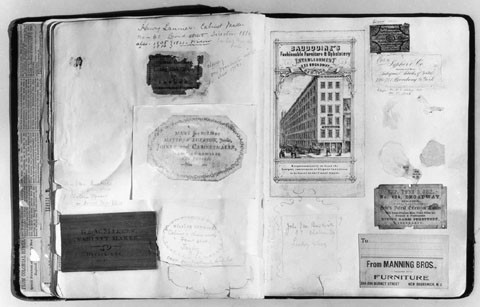
Two pages from a scrapbook compiled by Ernest F. Hagen, New York City, 1892–1906. Included are clippings of newspaper articles quoting Hagen and labels of New York cabinetmakers, removed from furniture that Hagen apparently restored and/or sold. (Courtesy, Museum of the City of New York, gift of Bernard & S. Dean Levy, Inc., and Mr. and Mrs. Benjamin Ginsburg; photo, Helga Studio.)
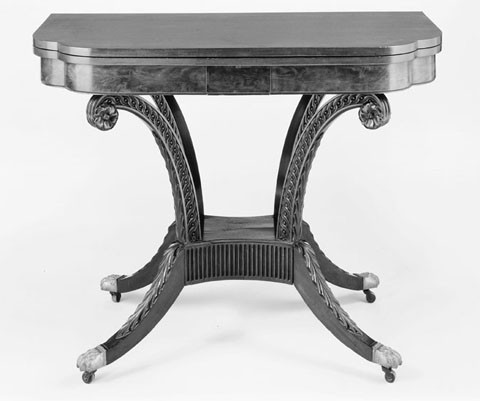
Card table with a partially legible paper label of Meier and Hagen (active 1858–1888), New York City, 1885–1888. Mahogany and mahogany veneer. H. 30", W. 39 1/4", D. 19 1/4". (Courtesy, New York State Museum, gift of The Wunsch Foundation; photo, Gavin Ashworth.)
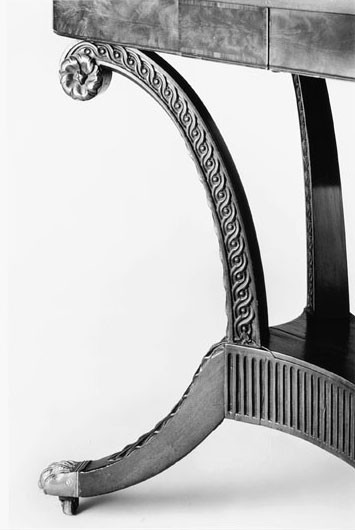
Detail of the support on the card table illustrated in fig. 2. (Photo, Gavin Ashworth.)
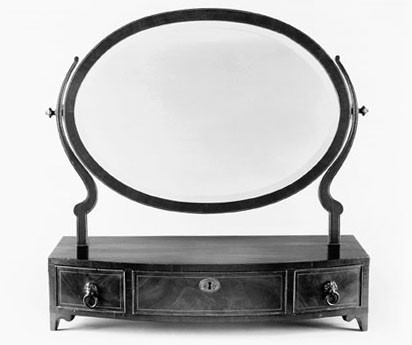
Dressing glass, American or English, 1790–1810; labeled by Meier and Hagen, with “Meier” crossed out in ink, ca. 1890; Mahogany, mahogany veneer, and lightwood stringing with pine. H. 20 1/2", W. 21 3/4", D. 18 1/2". (Courtesy, The Collection of the Newark Museum, gift of John Babcock Morris; photo, Gavin Ashworth.)
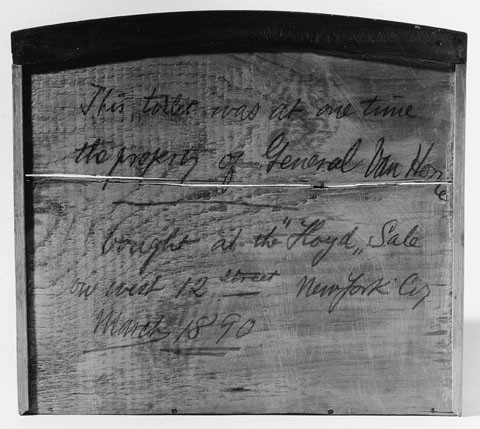
Detail of the inscription on the drawer of the dressing glass illustrated in fig. 4. (Photo, Gavin Ashworth.)
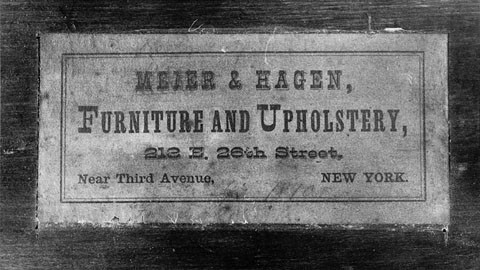
Detail of the label on the dressing glass illustrated in fig. 4. (Photo, Gavin Ashworth.)
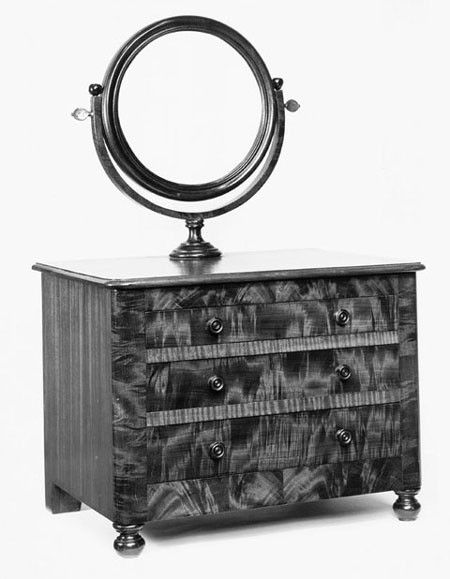
Dressing glass attributed to Duncan Phyfe, New York City, after 1847. Mahogany and mahogany veneer. H. 19 9/16", W. 12 1/4", D. 9 7/8". (Private collection, on loan to the Museum of the City of New York; photo, Helga Studio.)
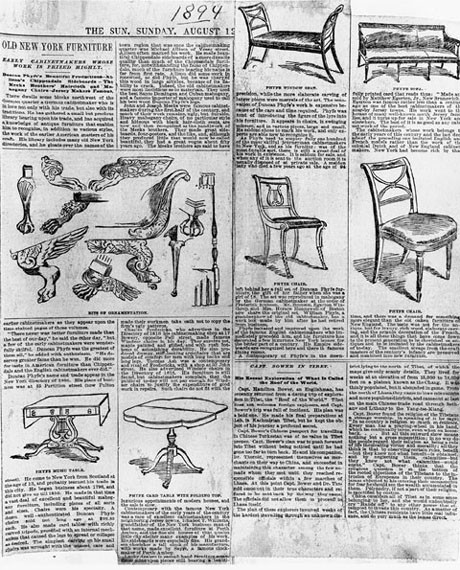
“Old New York Furniture,” New York Sun, August 12, 1894; from a scrapbook compiled by Ernest F. Hagen, 1892–1906. (Courtesy, Museum of the City of New York, gift of Bernard & S. Dean Levy, Inc., and Mr. and Mrs. Benjamin Ginsburg; photo, Helga Studio.)
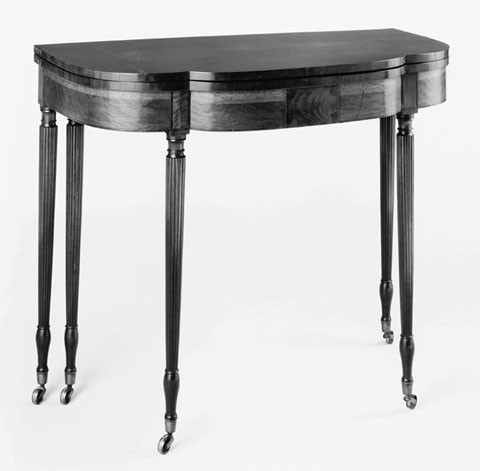
Card table (one of two) labeled by Ernest F. Hagen (1830–1913), New York City, 1890–1905. Mahogany and rosewood and birch veneer with pine. H. 30 5/16", W. 36 1/8", D. 17 7/8" (closed). (Courtesy, Museum of the City of New York, gift of Mrs. Harry Horton Benkard; photo, Gavin Ashworth.)

Detail of the underside of the table illustrated in fig. 9. (Photo, Gavin Ashworth.)
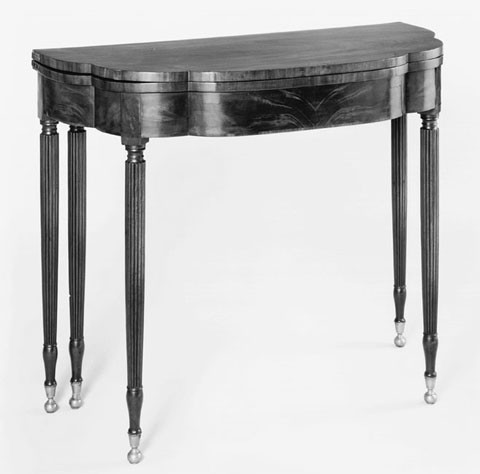
Card table labeled by John T. Dolan (1805–1815), New York City, 1809–1813. Mahogany and mahogany veneer with white pine and cherry. H. 30 1/8", W. 35 3/4", D. 36 5/16" (open). (Courtesy, Museum of the City of New York, gift of Doctors C. Ray and Winifred Hope Franklin; photo, Gavin Ashworth.)

Detail of the underside of the table illustrated in fig. 11. (Photo, Gavin Ashworth.)
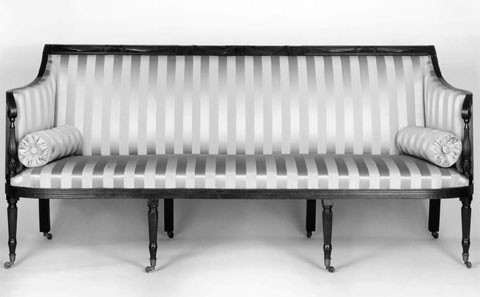
Sofa, New York City, 1810–1815; restored by the shop of Ernest F. Hagen, 1922. Mahogany with tulip poplar and pine. H. 37 3/16", W. 79 15/16", D. 25". (Courtesy, Museum of the City of New York, gift of Mrs. Harry Horton Benkard; photo, Gavin Ashworth.)
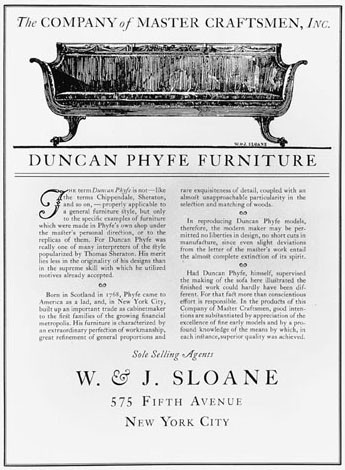
“The Company of Master Craftsmen, Inc./Duncan Phyfe Furniture,” W. & J. Sloane advertisement, Antiques 10, no. 3 September 1926): 156. (Courtesy, Museum of the City of New York; photo, Helga Studio.)
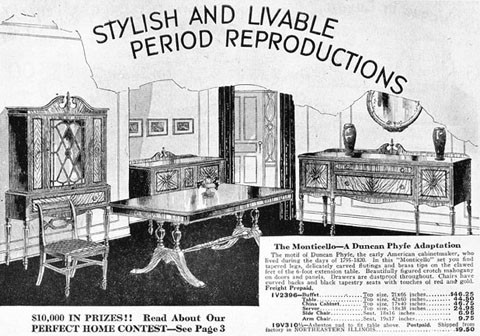
“The Monticello-A Duncan Phyfe Adaptation,” Sears, Roebuck and Co. catalogue, Spring-Summer 1930, p. 576. Naming the dining room suite “The Monticello” linked the “livable period reproductions” with statesman and politician Thomas Jefferson, thereby enhancing its symbolic value. (Courtesy, Museum of the City of New York; photo, Helga Studio.)
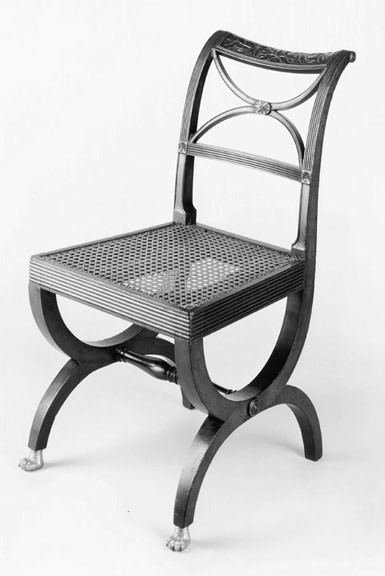
Curule side chair, New York City, 1810–1815; inscribed in ink on the inside of the front seat rail: “Thomas Cornell Pearsall made/for him by Duncan Phyfe.” Mahogany. H. 32 5/8", W. 17 3/4", D. 16 1/4". (Courtesy, Museum of the City of New York, gift of C. Ruxton Love; photo, Gavin Ashworth.)

Curule side chair labeled by Henry Dorr (1842/43–1862/63), New York City, 1842–1863. Mahogany. H. 32 5/8", W. 17 3/4", D. 16 1/4". (Courtesy, Museum of the City of New York, gift of C. Ruxton Love; photo, Gavin Ashworth.)

Detail of the “H. DORR” brand on the rail of the side chair illustrated in fig. 17. (Photo, Gavin Ashworth.)
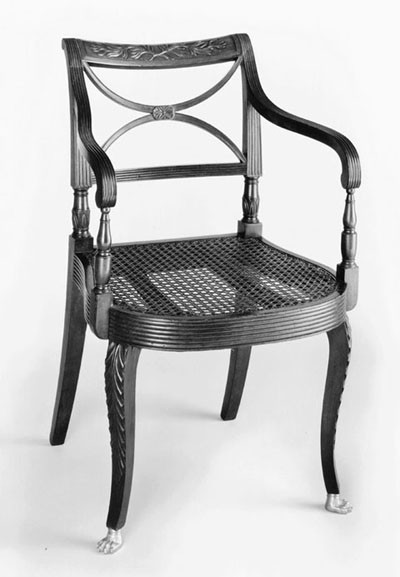
Armchair (one of two), New York City, ca. 1815. Mahogany. H. 33", W. 20 5/8", D. 17 15/16". (Courtesy, Museum of the City of New York, gift of Captain Marion Eppley, U.S.N. Ret., in honor of John Walden Myer; photo, Gavin Ashworth.)
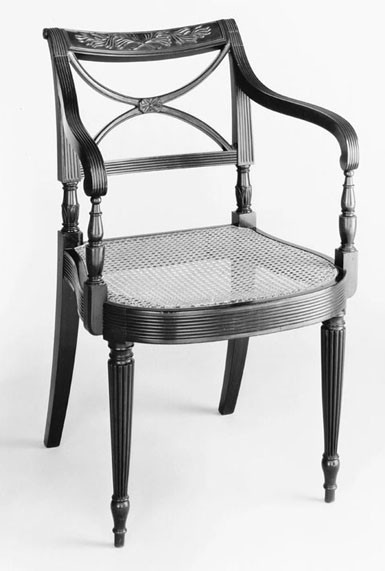
Scroll-back armchair labeled by Ernest F. Hagen, New York City, 1905. Mahogany. H. 31", W. 19 3/4", D. 17 3/4". (Private collection; photo, Gavin Ashworth.)
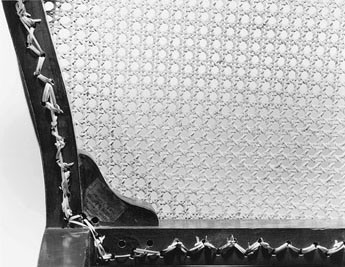
Detail of the underside of the seat of the armchair illustrated in fig. 20. (Photo, Gavin Ashworth.)

Detail of the back of the armchair illustrated in fig. 19. (Photo, Gavin Ashworth.)
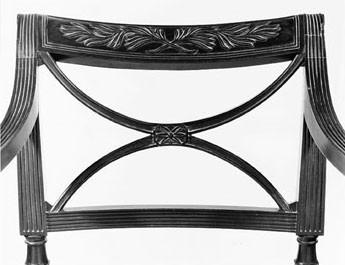
Detail of the back of the armchair illustrated in fig. 20. (Photo, Gavin Ashworth.)
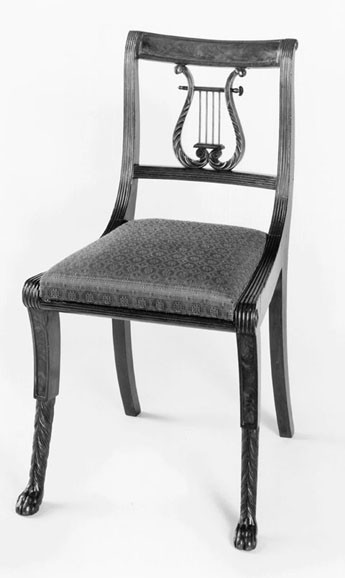
Scroll-back side chair, New York City, 1810–1820. Mahogany. H. 32 3/4", W. 17 7/8", D. 16 3/4". (Courtesy, Museum of the City of New York, gift of Berry B. Tracy; photo,Gavin Ashworth.)
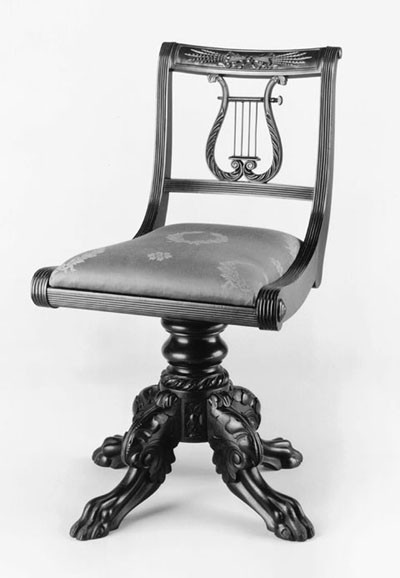
Music stool labeled by Ernest F. Hagen and inscribed in pencil “1901/Dr H (illegible),” New York City, 1901. Mahogany with oak. H. 32 1/4", W. 18 1/2", D. 17". (Courtesy, The Collection of The Newark Museum; photo, Gavin Ashworth.)
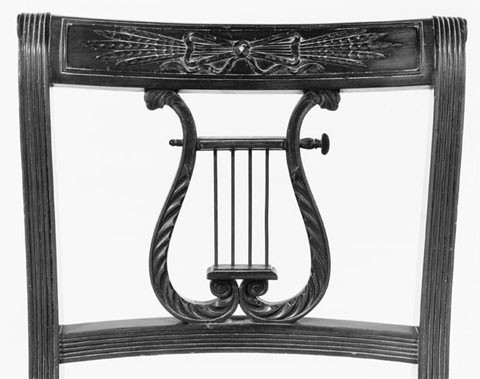
Detail of the back of the music stool illustrated in fig. 25. (Photo, Gavin Ashworth.)
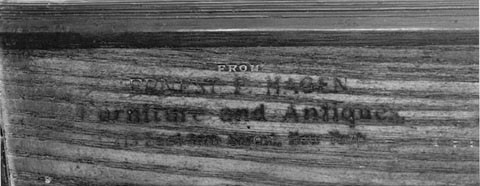
Detail of the Hagen brand on the block of the music stool illustrated in fig. 25. (Photo, Gavin Ashworth.)
